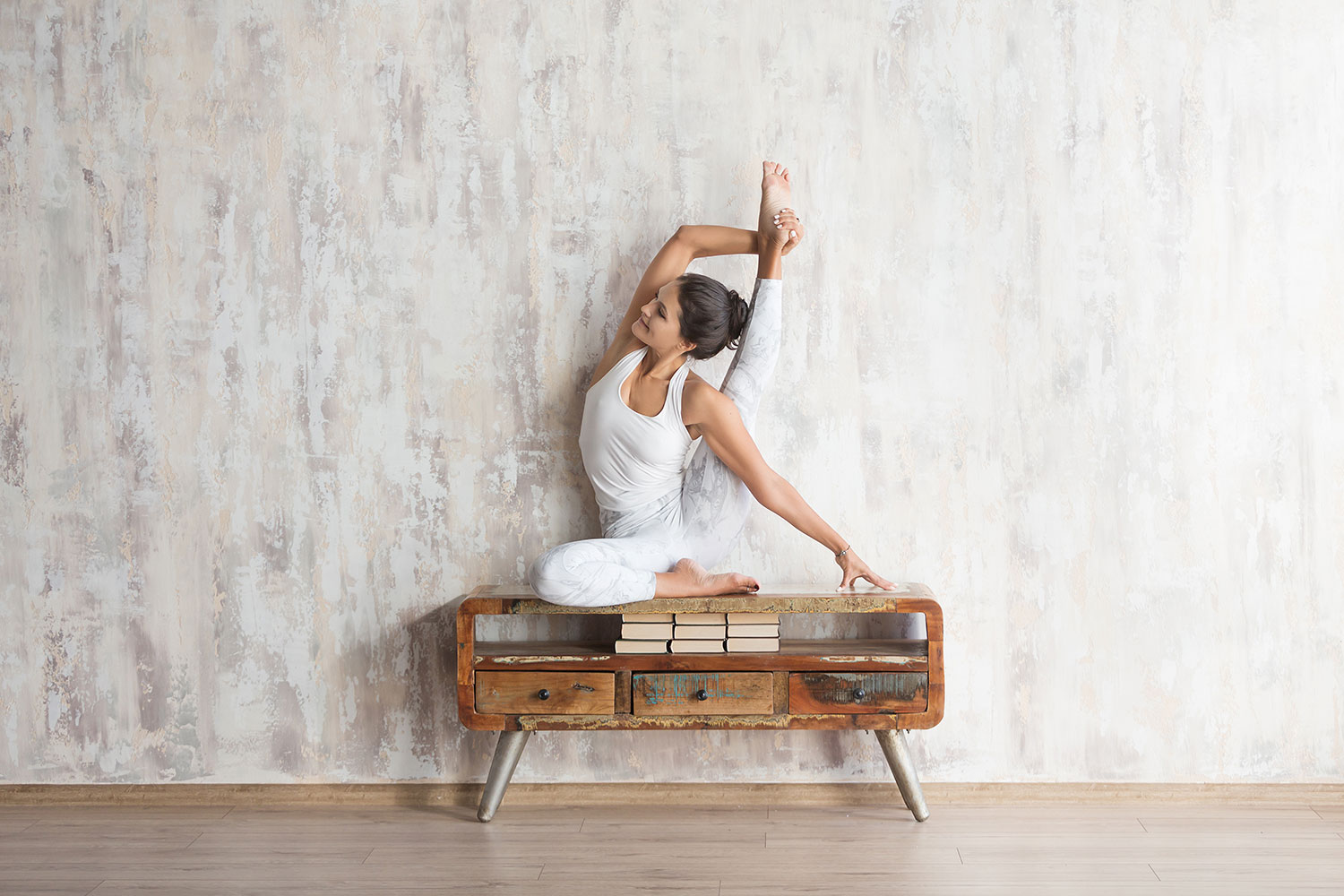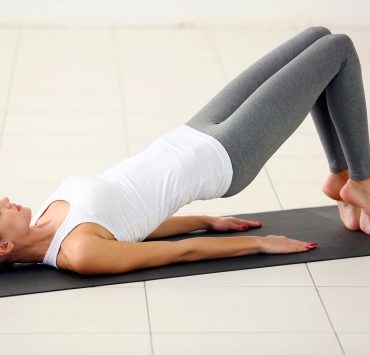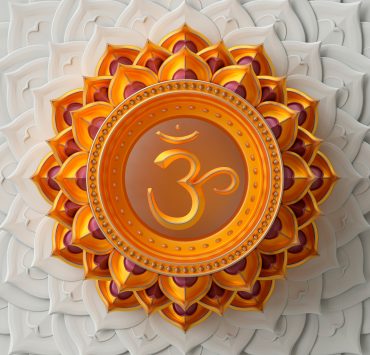
Having been a teacher’s assistant at over 50 yoga teacher…
There are plenty of reasons to practice yoga. You’ve probably heard that yoga shows a beneficial increase in flexibility, strength, and focus and you might have felt that for yourself in a class here and there. But you may still wonder how often should you practice yoga. Well, there is no one correct answer to this question. There are several different pieces that go into account for how often you should practice and it is an answer that is unique to each person.
Living Yoga

Now, traditionally and philosophically yoga is practiced every single day in our actions, thoughts, and daily activities. Written by Patanjali in the Yoga Sutras around 400 B.C., the Yamas (moral disciplines) and Niyamas (moral observances) are to be practiced in every moment. Although, in the Western evolvement of what is yoga today the practice of yoga has an emphasis on the physical asana practice. Whereas traditionally, the asana practice’s intention is clearing the body and mind for optimal health, so that we could live our truth and practice the morals of yoga in each day, as they also are done in the physical practice. There is a reason why we are drawn to the asana practice, because we end the practice somehow feeling better. It helps us become kinder, calmer, and authentic human beings in this world.
Yoga is the perfect opportunity to be curious about who you are. Jason Crandell
When you incorporate your practice into your daily life activities, the practice of yoga becomes our lifestyle – we are living yoga. However, there are so many different styles of yoga today and emphasis of fitness in yoga is continuing to grow. So then the question again – how often should you practice yoga?
The Asana Practice

First of all, let’s make this about the physical asana practice of yoga. When contemplating this question for yourself it is important to consider what else it is that you do that requires your physical and mental energy in your life. Are you an active person or athlete? Sedentary? Older adult? Young adult? Stressed, anxious or depressed? All of the different aspects of our lives and more can contribute to our yoga practice just as our yoga practice contributes to our lives. Considering what fits into your lifestyle helps you determine if you want to attend a gentler practice or more challenging practice.
For your own thought, here is a list of common yoga classes and styles that are out there. Using this may help determine what fits for your needs.
Common Types of Yoga Classes:

Hatha. The merging or masculine and feminine ideas and principles through asana.
Vinyasa. Classes always link breath with movement. There are different levels of vinyasa classes:
Ashtanga. Dynamic and physically challenging set sequence of movement and postures.
Jivamukti. Dynamic, heat building, and has a variation on sequences.
Baptiste/Power. Sometimes heated, powerful sequence that is physically challenging.
Other styles of flow and vinyasa are unique to teachers’ style of teaching, always linking breath and movement.
Alignment and Detail oriented:
Great classes for beginners and advanced practitioners that are looking to go back to the basics. They focus on the fundamental aspects of yoga postures. The following two types have emphasis on alignment, anatomy, and technique:
Iyengar. Beginner friendly, focus on fundamental foundations.
Anusara. Alignment and technique focus.
Therapeutic:
Integrative Yoga Therapy (IYT). Gentle yoga for healing.
Viniyoga. Gentle yoga with slow movements.
Bikram. Considered therapeutic for how the postures are held but is very challenging as the room is heated to at least 105 degrees Fahrenheit with a 40% humidity level. (*Many Bikram studios and classes no longer use the Bikram name, but still follow the similar sequence.)
Yin Yoga. Passive stretching poses are held for 3-10 minutes to allow time for the muscle and connective tissues to release and can challenge the mind and also the body in a different way because of the longer holds.
Other Meditative and Traditional Lineage Styles:
Kundalini. Varies from challenging and vigorous to gentle, slow and meditative. Devotional practice that includes chanting and singing. Developed by Yogi Bhajan.
Tantra. Any style that comes from the Hatha yoga tradition with a deeper meditative intention either during or after asana practice.
Bhakti. The yoga of love and devotion. Bhakti classes often have chanting or singing as a way of showing devotion and immersing in love.
What Style of Yoga Fits You

It is important to consider the reason why you came to yoga in the first place and why you are sticking with the practice, also, when determining what your practice may look like. And know that this may change as your practice goes on, and that’s okay. Did you come to yoga for increasing your strength and flexibility? To ease your mind of tension and anxiety? Promotes brain health? Because your doctor told you to? Whatever it may be, this can help you in knowing what classes you may like and what you want to incorporate into your practice. Whether it is restorative yoga, hot power yoga, vinyasa flow, etc.
If you are looking for a practice that will allow your body and mind to replenish, rest, and be at ease then a more restorative and gentle practice with yin postures may be a good fit for you. If you are someone that wants more of a physically challenging practice and also finds the mental challenge there too, then perhaps a powerful vinyasa or heated class fits your needs. That being said, mixing up the norm of your practice with a slower or faster pace of a practice also has its benefits. The key is to listen to what your body, mind, and spirit need.
Your Unique Practice

Among all of the styles of yoga out there, the key is finding what suits you and your needs for each day. Even just going to one yoga class a week can leave you feeling calmer and clearer. Sometimes that is all the time we have. But, to really reap the benefits of yoga a daily practice or even at least 3 times a week is where the benefits really begin to show and grow. When I say daily practice I don’t mean always going to a class every single day. Maybe some days the practice is a 10-15 minute sequence at home on your mat. If you need some guidance while at home, there are several online platforms that provide videos and sequences that you can stream. One popular Youtube channel, Yoga With Adrienne, offers free videos to guide you on your mat at any time. The first step of a yoga practice is coming into the space for the practice, connecting with your breath, and exploring what is going on within. Sometimes even just getting on your mat and realizing that you need to just lay there and listen to your breath is a practice too. That is the beauty of yoga, the true yoga is completely yours and it comes from within and what you uniquely need. It may be a powerful, fast paced movement practice or simply just laying there. The yoga happens when you listen to what you need, explore, and deepen the connection between you and your body.
If you practice yoga once a week, you will change your mind. If you practice twice a week you will change your body. If you practice every day, you will change your life. B.K.S. Iyengar
The true yoga of connecting within your own self, ideally that happens in a daily home practice. Now, with that said, going to a class is really beneficial. It holds a space for each individual’s yoga practice, you are with other people, you have the guidance, and you can learn how to facilitate a home practice. Developing a home practice takes time and patience, and as it develops, the yoga classes and videos become the place for workshop and learning about the practice that you can then add into your own practice.
I am definitely not saying to not take a yoga class. Your own unique practice can happen in a yoga class, especially as your own practice develops and you learn more about what works for you. You can use a yoga class to support your own daily practice as you learn more about practicing yoga. Sometimes a yoga class is also a better option than practicing at home, if you don’t currently have the space, there are too many distractions, etc. Either way, getting on your mat where it is just you and your mat, can become magical as you create the space for a deeper connection and awareness within yourself.
True yoga comes from within, and having another body around most often keeps you outside yourself, not inside. Stephanie Keach, the author of The Yoga Handbook
I wish I could give you an exact answer as to how often you should practice a week. Ideally, most yoga teachers will agree that a daily practice is ideal. Like I said before, this does not mean an hour and a half yoga class everyday. For some people that is feasible and works well for them, for others it is not. A practice can also be taking a few minutes in the morning, night, or sometime throughout the day to tune into your body, breath, and mind. The key is about the frequency of practicing regularly, whenever in the day it may be. This still makes a big difference for your day than if you hadn’t. The important part of a true yoga practice is the listening to and connecting with what is going on within, feeling it, and having your practice that supports your needs for that day.
Listen To Your Body

There are some precautions to keep in mind when beginning a yoga practice. If it is for physical reasons, a yoga practice can foster healing, flexibility, and building of strength. But, your body should not get to the point of extreme exhaustion or dehydration from doing too much. If this happens, take what your body needs to rest and rejuvenate, especially if you enjoy taking powerful and/or heated classes. Hot yoga has become very popular in the west. Some benefits of heated classes are the strength building, a detox feeling from the amount of sweat, increased flexibility from the warmth in your body, and the feeling of accomplishment after the class. But it is important to know of the precautions that should be taken when practicing hot yoga regularly. There is the common idea that extremely heated classes burn more calories, which is a selling point for these classes, but a recent study has shown that to be not true.
Doing anything with attention to how you feel is doing yoga. Jean Couch
Your body may be working harder, but it is working to cool you down. Dehydration is a major concern in hot yoga, especially the higher humidity classes like Bikram, from the amount of water loss in sweat. Make sure to drink more than plenty of water before, during, and after the class. Heat exhaustion and adrenal fatigue can also happen from the repeated amount of heat and stress on the body. So, just stay mindful when practicing in these conditions and listen to what your body is telling you. Some people practice hot yoga regularly and it works well for them, so you can do this if it fits your needs and your body can handle the conditions. Always take and do what you need, some days it may be powerful and some days it can be gentle, too.
True Yoga

The true intention of yoga is to deepen the connection within yourself so that you can grow towards your highest and best self. Yoga takes each day as it is, and encourages you to listen to your own unique being. An asana practice helps this on our mats so that we can explore, challenge ourselves, get to know ourselves, be curious, grow physically and mentally stronger and flexible, and allow our true self to show through the common corruption of the negativity in the world around us. Allow your practice to suit your own lifestyle.
Do your practice and all is coming. Sri. K. Pattahbi Jois
Whether you practice once, twice, or multiple times a week, continue to use each practice to approach yourself with curiosity. You may find something you didn’t know was there, learn, and grow. As your practice continues you may find that you need to practice more often and perhaps physically differently depending on what is throwing or not throwing at you, and this is okay, for each change can bring growth.
What's Your Reaction?
Having been a teacher’s assistant at over 50 yoga teacher trainings worldwide, Rebecca Rebecca has a firm grasp on the fine art of yoga and meditation. In her work, she carefully reflects on a vast expanse of knowledge to help others find peace in both body and mind.














